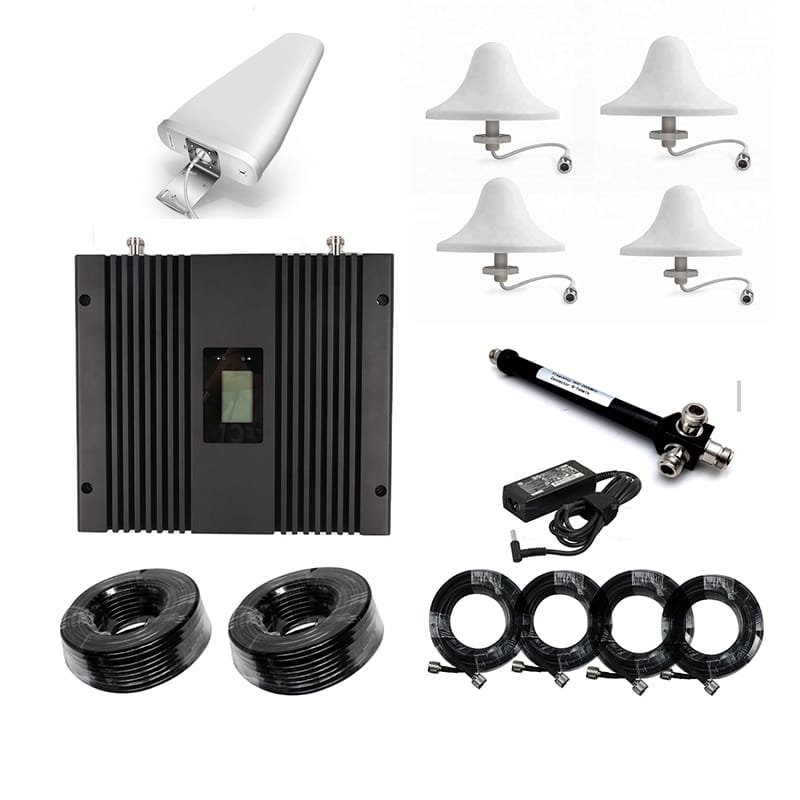Offices and Commercial Buildings
Mobile Signal Boosters for Offices and Commercial Buildings
Mobile signal boosters are essential for ensuring reliable cellular reception in offices and commercial buildings. These environments often face unique challenges that can interfere with signal strength, such as building materials, size, and internal structures. Here’s an in-depth look at how mobile signal boosters are applied in these settings:
Lorem ipsum dolor sit amet, consectetur adipiscing elit. Ut elit tellus, luctus nec ullamcorper mattis, pulvinar dapibus leo.

Common Challenges in Offices and Commercial Buildings
- Building Materials: Materials like concrete, steel, and glass can block or weaken cellular signals.
- Building Size: Large buildings with multiple floors often have areas with poor signal coverage.
- Internal Structures: Walls, partitions, and electronic equipment can interfere with signal transmission.
- Urban Density: In densely populated areas, signal interference from nearby buildings and infrastructure can be significant.
Benefits of Mobile Signal Boosters
- Improved Call Quality: Reduces dropped calls and enhances voice clarity, ensuring reliable communication.
- Faster Data Speeds: Enhances data transfer rates for better internet browsing, streaming, and application use.
- Extended Coverage: Ensures that all areas of the building, including basements and higher floors, have strong cellular signals.
- Increased Productivity: Reliable connectivity helps employees stay connected and work efficiently.
- Better Customer Experience: Provides clients and visitors with consistent connectivity, enhancing their experience.
Key Components of a Mobile Signal Booster System
- External Antenna: Captures the cellular signal from the nearest cell tower. Typically installed on the roof or an external wall.
- Signal Booster Unit: Amplifies the captured signal.
- Internal Antennas: Distribute the amplified signal throughout the building. Multiple internal antennas may be needed for large buildings.
- Cabling: Connects the external antenna to the booster unit and the booster to the internal antennas.
Installation Considerations
- Site Survey: Conduct a thorough survey to identify areas with weak signals and determine the best locations for antennas.
- External Antenna Placement: Position the external antenna in a location that captures the strongest possible signal.
- Booster Location: Install the booster unit in a central location to effectively distribute the amplified signal.
- Internal Antennas: Strategically place internal antennas to ensure even coverage across all areas, including common areas, individual offices, and meeting rooms.
- Professional Installation: Due to the complexity of commercial buildings, professional installation is often recommended for optimal results.
Types of Mobile Signal Boosters for Offices and Commercial Buildings
- Single-Band Boosters: Suitable for buildings where all users are on the same network.
- Multi-Band Boosters: Ideal for environments with users on different networks, as they can boost multiple carrier signals simultaneously.
- High-Gain Boosters: Designed for large buildings and can cover extensive areas with a strong amplified signal.
Popular Use Cases
- Corporate Offices: Ensure reliable communication and data connectivity for employees across all floors.
- Retail Stores: Enhance customer experience by providing consistent cellular connectivity throughout the store.
- Hospitals and Clinics: Ensure that medical staff and patients have reliable connectivity for communication and access to online resources.
- Hotels: Provide guests with consistent cellular signal coverage in all rooms and common areas.
- Warehouse and Industrial Facilities: Maintain reliable communication for staff in large, complex environments.

Quad Band Mobile Signal Booster for 700/1800/2100/2600 MHz – 300 SQM Coverage | All UK Networks

2000Sqm Big Range 4G 850/1900Mhz Mobile Signal Repeater For Building AT&T Claro

Mobile Booster For Home 3G 4G 5G 1800/3500mhz 5g Signal Booster









